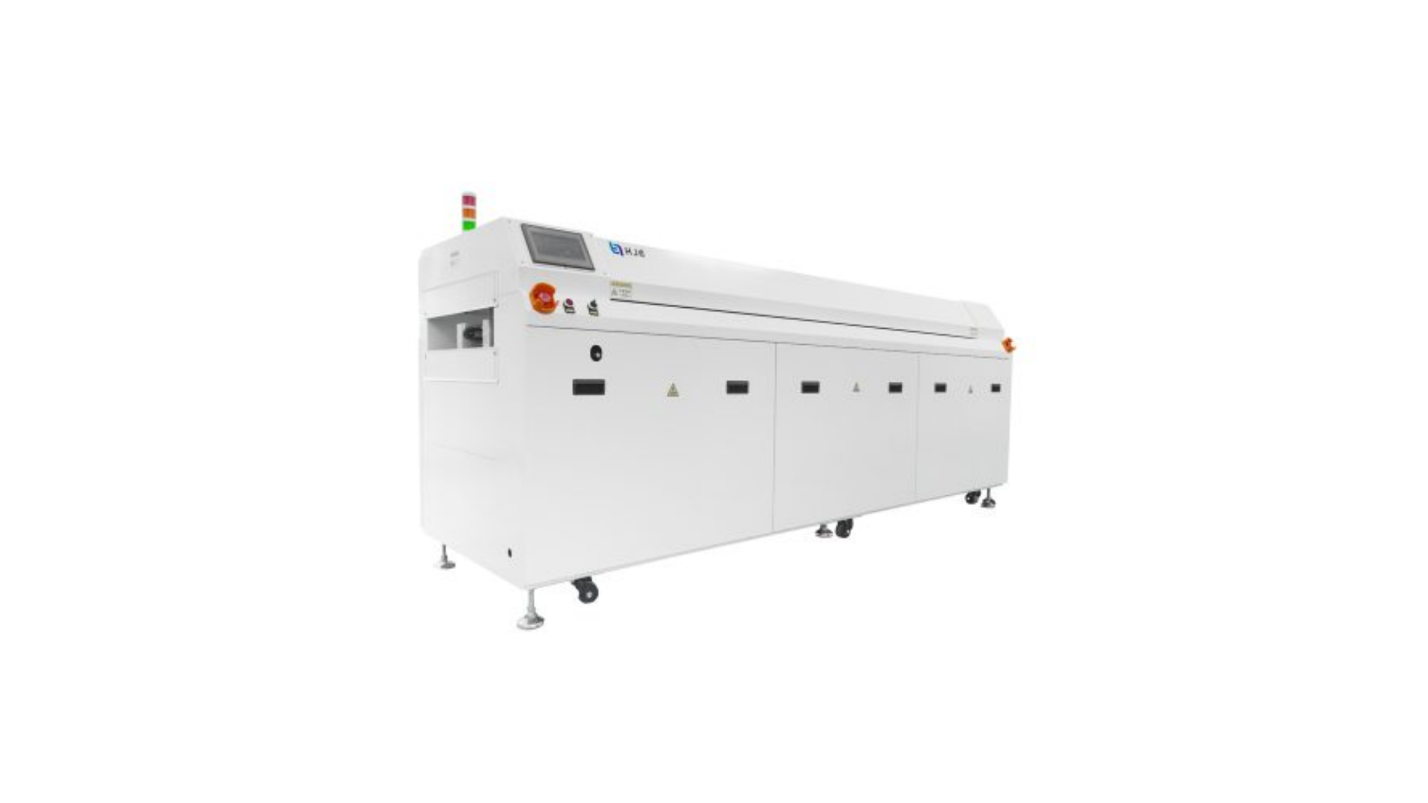
With more information, you make better decisions. This is why we bring you this guide on the functions of every type of curing oven. Keep reading to know more!
In modern PCB manufacturing, curing ovens play a crucial role across industries such as electronics, automotive, aerospace, and coatings. These ovens are designed to apply controlled heat to materials to initiate chemical reactions, harden coatings, or improve product durability.
In this blog, we’ll explore the main types of curing ovens and their applications.
Types of Curing Ovens: A Comprehensive Guide
There are several types of curing ovens, including Infrared (IR), Ultraviolet (UV), Convection, and Hybrid ovens, each with distinct working processes, features, applications, and advantages or limitations.
Let the experts help you learn about it better!
1. Infrared (IR) Curing Ovens
How Do IR Curing Ovens Work?
Infrared curing ovens use radiant heat to transfer energy directly to the surface of the material. The heat is absorbed by the product, causing rapid curing without the need to heat the surrounding air.
What are the Key Features of IR Curing Ovens?
- Rapid heating of surfaces
- Energy-efficient due to direct heat transfer
- Suitable for thin coatings or small parts
What is the Application of an IR Curing Oven?
- Coating and painting of automotive parts
- Electronics for curing adhesives or coatings
- Plastics and composite materials
Understanding the Pros and Cons of IR Curing Ovens
Pros:
- Fast curing cycles
- Reduces energy consumption
- Compact design
Cons:
- Limited penetration for thicker materials
- May require careful control to avoid overheating
2. Ultraviolet (UV) Curing Ovens
How do UV Curing Ovens work?
UV curing ovens use ultraviolet light to initiate a photochemical reaction in coatings or adhesives. Unlike heat curing, the UV light instantly hardens the surface material without requiring high temperatures.
What are the Key Features of this Curing Oven?
- Instant curing at room temperature
- Precise control over curing intensity and duration
- Minimal thermal stress on components
Where Can It Be Used?
- Printing inks
- Protective coatings
- Electronics and optical components
Understanding the Pros and Cons
Pros:
- Very fast curing times (seconds instead of minutes or hours)
- Energy-efficient as no heat is required
- Ideal for heat-sensitive substrates
Cons:
- Limited to materials that are UV-reactive
- Requires proper shielding to protect operators
3. Convection Curing Ovens
How Do Convection Curing Ovens Work?
Convection ovens use heated air to transfer thermal energy to the material. The hot air circulates inside the chamber, ensuring uniform temperature distribution for consistent curing.
What are the Key Features?
- Uniform heating throughout the product
- Can handle large or bulky items
- Adjustable airflow for process optimization
What are the Applications of the Convection Curing Oven?
- Powder coating
- Adhesive curing
- General industrial parts
Understand the Pros and Cons
Pros:
- Excellent for thick or large materials
- Reliable and well-understood technology
- Can handle high-volume production
Cons:
- Slower than IR or UV curing
- Higher energy consumption due to heating of air
4. Hybrid Curing Ovens
How Do Hybrid Curing Ovens Work?
Hybrid curing ovens combine multiple heating technologies, such as IR and convection, to optimize curing efficiency. By using the strengths of each method, hybrid ovens can deliver faster and more uniform results.
What are the Key Features of Hybrid Curing Ovens?
- Combines radiant and convective heating
- Adjustable settings to match material requirements
- Enhanced process control
What is the Application of Hybrid Curing Ovens?
- Automotive coatings
- Electronics assembly
- Industrial composites
Understanding the Pros and Cons
Pros:
- Faster and more uniform curing
- Flexible for different materials and coatings
- Reduces total curing time and energy usage
Cons:
- Higher initial cost
- More complex maintenance
Conclusion
Understanding the right type of curing oven helps you select the one that suits your needs the best. Your choice depends on factors like the materials, coating type, production volume, and desired curing speed.
Infrared ovens excel in rapid surface curing, UV ovens are perfect for instant curing of sensitive materials, convection ovens ensure uniform curing for bulky items, and hybrid ovens provide versatility and efficiency.
Understanding these options helps manufacturers improve product quality, reduce production time, and save energy.
Get your ideal SMT machines from the best provider. HJE Tech India PVT. LTD. is here to help you out!
Expert SMT Solutions, All in One Place
With HJE Tech India PVT. LTD., you can enjoy industry expertise, global partnership, a customer-centric approach, and a range of SMT machines that deliver quality, efficiency, and innovation.
Enhance productivity and quality. Get in touch with us for more information. Shop with us today!
FAQs on Curing Ovens Types
What are the main types of curing ovens?
The primary types include Infrared (IR) ovens, Ultraviolet (UV) ovens, Convection ovens, and Hybrid ovens, each using different methods to transfer heat or energy for curing.
What industries commonly use curing ovens?
Curing ovens are essential in electronics manufacturing, automotive coatings, medical devices, LED production, and aerospace components, where precise curing is critical for quality and durability.
How do I choose the right curing oven for my application?
The choice depends on material type, coating thickness, production volume, and required curing speed. Factors like heat sensitivity, energy efficiency, and uniformity should also be considered.
Can HJE Tech provide support for curing oven installation and maintenance?
Yes, HJE Tech India PVT. LTD. offers complete solutions, including equipment supply, installation, and ongoing maintenance support for all types of curing ovens.
